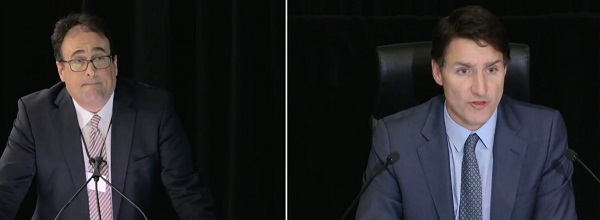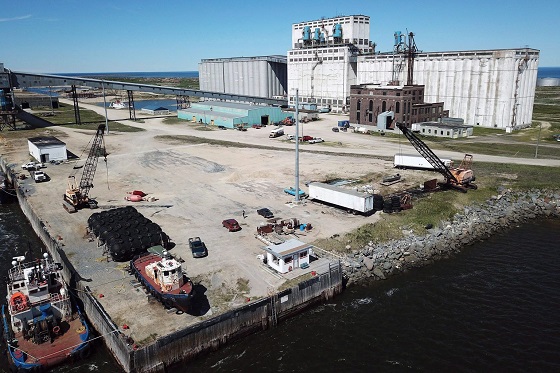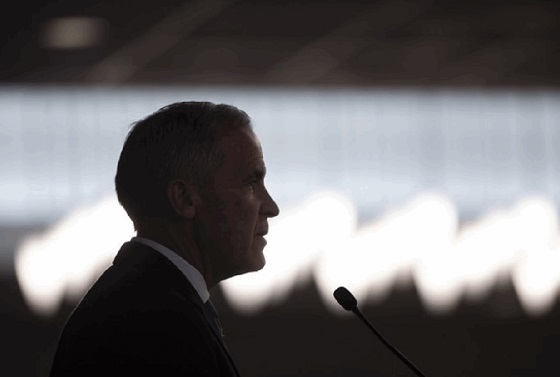National
Trudeau clinging like a ‘low-key autocrat’: Jeremy Nuttall

By Jeremy Nuttall
Is Canada looking like a developing nation with a corruption problem and a soft authoritarian regime?
This isn’t normal. Not even close. Even the most eccentric of Prime Ministers in any other commonwealth country would likely be licking their wounds in Ibiza by now, watching the chaos unfold from a safe distance.
Not this Prime Minister. True to form as the head of a micromanaging Prime Minister’s Office, he couldn’t bring himself to step aside. In fact, he still hasn’t.
Trudeau’s stubbornness edges dangerously close to the behavior of a low-key autocrat. He was nowhere to be seen for days as he shrugged off demands to “get lost in the snow.”
Imagine a country with a leader so deeply unpopular within his own party that members, mostly speaking anonymously out of fear, pressured him for months to step down—only for him to deflect with vague promises of “reflection” whenever the pressure mounted.
Imagine that happening against the background of the leader refusing to release documents as ordered by Parliament, at the same time the political landscape is embroiled in a foreign interference scandal. Meanwhile, food bank usage has surged, and concerns over soaring housing costs continue to grow.
Then, after a top minister leaves and drives a stake through his government, that leader circles his most loyal comrades in a bid to fend off the resignation even more before finally admitting defeat.
But even then, after the admission, said leader is still in charge and only promising to resign fully once his successor is chosen, then stopping the work of government at one of the most crucial times in recent history to give himself and his party time to get their affairs in order.
If you had that explained to you without knowing it was Canada, would you think it was a western parliamentary democracy being described, or a developing nation with a corruption problem and a soft authoritarian regime?
Democracies aren’t meant to prioritize the personal interests of government members over the country’s welfare. Yet that’s exactly what Trudeau did by requesting the prorogation of Parliament, giving his Liberals time to strategize for their own political survival.
Meanwhile, for the first few months of a new U.S. administration threatening major tariffs, Canada will be limited in its ability to address whatever happens in the House. With so much at stake, this move seems almost vindictive to a Canadian public who are now rejecting Liberal leadership.
Governor General Mary Simon’s decision to allow this—and the time she took to consider it—deserves scrutiny. The public is owed an explanation.
The Liberal Party’s troubles are not the Canadian public’s troubles, but in proroguing Parliament to deal with them, the Liberals have made them such.
Trudeau’s plan for the country is incoherent, his ministers suddenly have a lot of family obligations, and even columnists who curiously supported him for years too long are now calling for his exit.
Additionally, with him waiting until the Liberals are at their most unpopular ever, the Conservatives—set to win in a landslide no matter what—can control the narrative of the election and claim to have won on any mandate they see fit. The public could be left out of the conversation.
When tallied up, it’s all so awful.
In reality, however abnormal this is, it’s the natural course of where Canadians have allowed their country to end up.
Years of not really getting that upset about anything or realizing that the government and what it does matters are starting to show the real harms a country can be haunted by when it shrugs off the chipping away of its democratic norms by shallow and venal political operatives.
As pressure mounted on Trudeau to resign, his own MPs sheepishly asked for him to step down, an illustration that the PMO holds far too much power over caucus. One was left wondering if a breaking point would happen and MPs would make a grand gesture on behalf of Canadians.
Such a climax never arrived. My incredibly small kingdom for a handful of Liberal MPs with cojones.
The really sad part is, so far, it seems Liberal MPs missed a chance to turn the tide and more forcefully oust Trudeau from the leadership role by any means necessary, even if it meant voting against their own party.
They could have sent a message that democracy is a cumulative effort, not the whims of one person, then followed it up with reasonable changes to party policy to allow for the removal of a leader should such circumstances occur again.
What this has done is set a new low bar. The next power-crazed PMO will have this one as a blueprint to disregard the public and its welfare before pushing the limit even further.
The only bar lower at this point would be if Trudeau goes back on his promise to resign. Yes, it’s a long shot, but considering this guy’s track record of keeping promises—right up there with an absentee father in a daytime drama—I’ll really believe he’s gone when he’s gone.
This is a moment Canadians really need to examine and question if the way their government has been operating is working for them. If it isn’t, a movement for change must spring up.
Dignity, tradition, integrity, the common good—all of these principles risk becoming meaningless unless Canadians begin to take them seriously.
The Bureau is a reader-supported publication. To receive new posts and support my work, consider becoming a free or paid subscriber.
Business
New airline compensation rules could threaten regional travel and push up ticket prices

New passenger compensation rules under review could end up harming passengers as well as the country’s aviation sector by forcing airlines to pay for delays and cancellations beyond their control, warns a new report published this morning by the MEI.
“Air travel in Canada is already unaffordable and inaccessible,” says Gabriel Giguère, senior public policy analyst at the MEI. “New rules that force airlines to cover costs they can’t control would only make a bad situation worse.”
Introduced in 2023 by then-Transport Minister Omar Alghabra, the proposed amendment to the Air Passenger Protection Regulations would make airlines liable for compensation in all cases except those deemed “exceptional.” Under the current rules, compensation applies only when the airline is directly responsible for the disruption.
If adopted, the new framework would require Canadian airlines to pay at least $400 per passenger for any “unexceptional” cancellation or delay exceeding three hours, regardless of fault. Moreover, the definition of “exceptional circumstances” remains vague and incomplete, creating regulatory uncertainty.
“A presumed-guilty approach could upend airline operations,” notes Mr. Giguère. “Reversing the burden of proof introduces another layer of bureaucracy and litigation, which are costs that will inevitably be passed on to consumers.”
The Canadian Transportation Agency estimates that these changes would impose over $512 million in additional costs on the industry over ten years, leading to higher ticket prices and potentially reducing regional air service.
Canadians already pay some of the highest airfares in the world, largely due to government-imposed fees. Passengers directly cover the Air Travellers Security Charge—$9.94 per domestic flight and $34.42 per international flight—and indirectly pay airport rent through Airport Improvement Fees included on every ticket.
In 2024 alone, airport authorities remitted a record $494.8 million in rent to the federal government, $75.6 million more than the previous year and 68 per cent higher than a decade earlier.
“This new regulation risks being the final blow to regional air travel,” warns Mr. Giguère. “Routes connecting smaller communities will be the first to disappear as costs rise and they become less profitable.”
For instance, a three-hour and one minute delay on a Montreal–Saguenay flight with 85 passengers would cost an airline roughly $33,000 in compensation. It would take approximately 61 incident-free return flights to recoup that cost.
Regional air service has already declined by 34 per cent since 2019, and the added burden of this proposed regulation could further reduce connectivity within Canada. It would also hurt Canadian airlines’ competitiveness relative to U.S. carriers operating out of airports just south of the border, whose passengers already enjoy lower fares.
“If the federal government truly wants to make air travel more affordable,” says Mr. Giguère, “it should start by cutting its own excessive fees instead of scapegoating airlines for political gain.”
You can read the Economic Note here.
* * *
The MEI is an independent public policy think tank with offices in Montreal, Ottawa, and Calgary. Through its publications, media appearances, and advisory services to policymakers, the MEI stimulates public policy debate and reforms based on sound economics and entrepreneurship.
Business
Will the Port of Churchill ever cease to be a dream?

From Resource Works
The Port of Churchill has long been viewed as Canada’s northern gateway to global markets, but decades of under-investment have held it back.
A national dream that never materialised
For nearly a century, Churchill, Manitoba has loomed in the national imagination. In 1931, crowds on the rocky shore watched the first steamships pull into Canada’s new deepwater Arctic port, hailed as the “thriving seaport of the Prairies” that would bring western grain “1,000 miles nearer” to European markets. The dream was that this Hudson Bay town would become a great Canadian centre of trade and commerce.
The Hudson Bay Railway was blasted across muskeg and permafrost to reach what engineers called an “incomparably superior” harbour. But a short ice free season and high costs meant Churchill never grew beyond a niche outlet beside Canada’s larger ports, and the town’s population shrank.
False starts, failed investments
In 1997, Denver based OmniTrax bought the port and 900 kilometre rail line with federal backing and promises of heavy investment. Former employees and federal records later suggested those promises were not fully kept, even as Ottawa poured money into the route and subsidies were offered to keep grain moving north. After port fees jumped and the Canadian Wheat Board disappeared, grain volumes collapsed and the port shut, cutting rail service and leaving northern communities and miners scrambling.
A new Indigenous-led revival — with limits
The current revival looks different. The port and railway are now owned by Arctic Gateway Group, a partnership of First Nations and northern municipalities that stepped in after washouts closed the line and OmniTrax walked away. Manitoba and Ottawa have committed $262.5 million over five years to stabilize the railway and upgrade the terminal, with Manitoba’s share now at $87.5 million after a new $51 million provincial pledge.
Prime Minister Mark Carney has folded Churchill into his wider push on “nation building” infrastructure. His government’s new Major Projects Office is advancing energy, mining and transmission proposals that Ottawa says add up to more than $116 billion in investment. Against that backdrop, Churchill’s slice looks modest, a necessary repair rather than a defining project.
The paperwork drives home the point. The first waves of formally fast tracked projects include LNG expansion at Kitimat, new nuclear at Darlington and copper and nickel mines. Churchill sits instead on the office’s list of “transformative strategies”, a roster of big ideas still awaiting detailed plans and costings, with a formal Port of Churchill Plus strategy not expected until the spring of 2026 under federal–provincial timelines.
Churchill as priority — or afterthought?
Premier Wab Kinew rejects the notion that Churchill is an afterthought. Standing with Carney in Winnipeg, he called the northern expansion “a major priority” for Manitoba and cast the project as a way for the province “to be able to play a role in building up Canada’s economy for the next stage of us pushing back against” U.S. protectionism. He has also cautioned that “when we’re thinking about a major piece of infrastructure, realistically, a five to 10 year timeline is probably realistic.”
On paper, the Port of Churchill Plus concept is sweeping. The project description calls for an upgraded railway, an all weather road, new icebreaking capacity in Hudson Bay and a northern “energy corridor” that could one day move liquefied natural gas, crude oil, electricity or hydrogen. Ottawa’s joint statement with Manitoba calls Churchill “without question, a core component to the prosperity of the country.”
Concepts without commitments
The vision is sweeping, yet most of this remains conceptual. Analysts note that hard questions about routing, engineering, environmental impacts and commercial demand still have to be answered. Transportation experts say they struggle to see a purely commercial case that would make Churchill more attractive than larger ports, arguing its real value is as an insurance policy for sovereignty and supply chain resilience.
That insurance argument is compelling in an era of geopolitical risk and heightened concern about Arctic security. It is also a reminder of how limited Canada’s ambition at Churchill has been. For a hundred years, governments have been willing to dream big in northern Manitoba, then content to underbuild and underdeliver, as the port’s own history of near misses shows. A port that should be a symbol of confidence in the North has spent most of its life as a seasonal outlet.
A Canadian pattern — high ambition, slow execution
The pattern is familiar across the country. Despite abundant resources, capital and engineering talent, mines, pipelines, ports and power lines take years longer to approve and build here than in competing jurisdictions. A tangle of overlapping regulations, court challenges and political caution has turned review into a slow moving veto, leaving a politics of grand announcements followed by small, incremental steps.
Churchill is where those national habits are most exposed. The latest round of investment, led by Indigenous owners and backed by both levels of government, deserves support, as does Kinew’s insistence that Churchill is a priority. But until Canada matches its Arctic trading rhetoric with a willingness to build at scale and at speed, the port will remain a powerful dream that never quite becomes a real gateway to the world.
Headline photo credit to THE CANADIAN PRESS/John Woods
-

 Alberta2 days ago
Alberta2 days ago‘Weird and wonderful’ wells are boosting oil production in Alberta and Saskatchewan
-

 Alberta2 days ago
Alberta2 days agoAlberta to protect three pro-family laws by invoking notwithstanding clause
-

 Business2 days ago
Business2 days agoCanada is failing dismally at our climate goals. We’re also ruining our economy.
-

 Artificial Intelligence2 days ago
Artificial Intelligence2 days agoLawsuit Claims Google Secretly Used Gemini AI to Scan Private Gmail and Chat Data
-

 Health1 day ago
Health1 day agoCDC’s Autism Reversal: Inside the Collapse of a 25‑Year Public Health Narrative
-

 Energy2 days ago
Energy2 days agoThe Carney Government is Hijacking the Phase “Energy Superpower” to Advance Their Agenda
-

 Crime1 day ago
Crime1 day agoCocaine, Manhunts, and Murder: Canadian Cartel Kingpin Prosecuted In US
-

 Health1 day ago
Health1 day agoBREAKING: CDC quietly rewrites its vaccine–autism guidance








